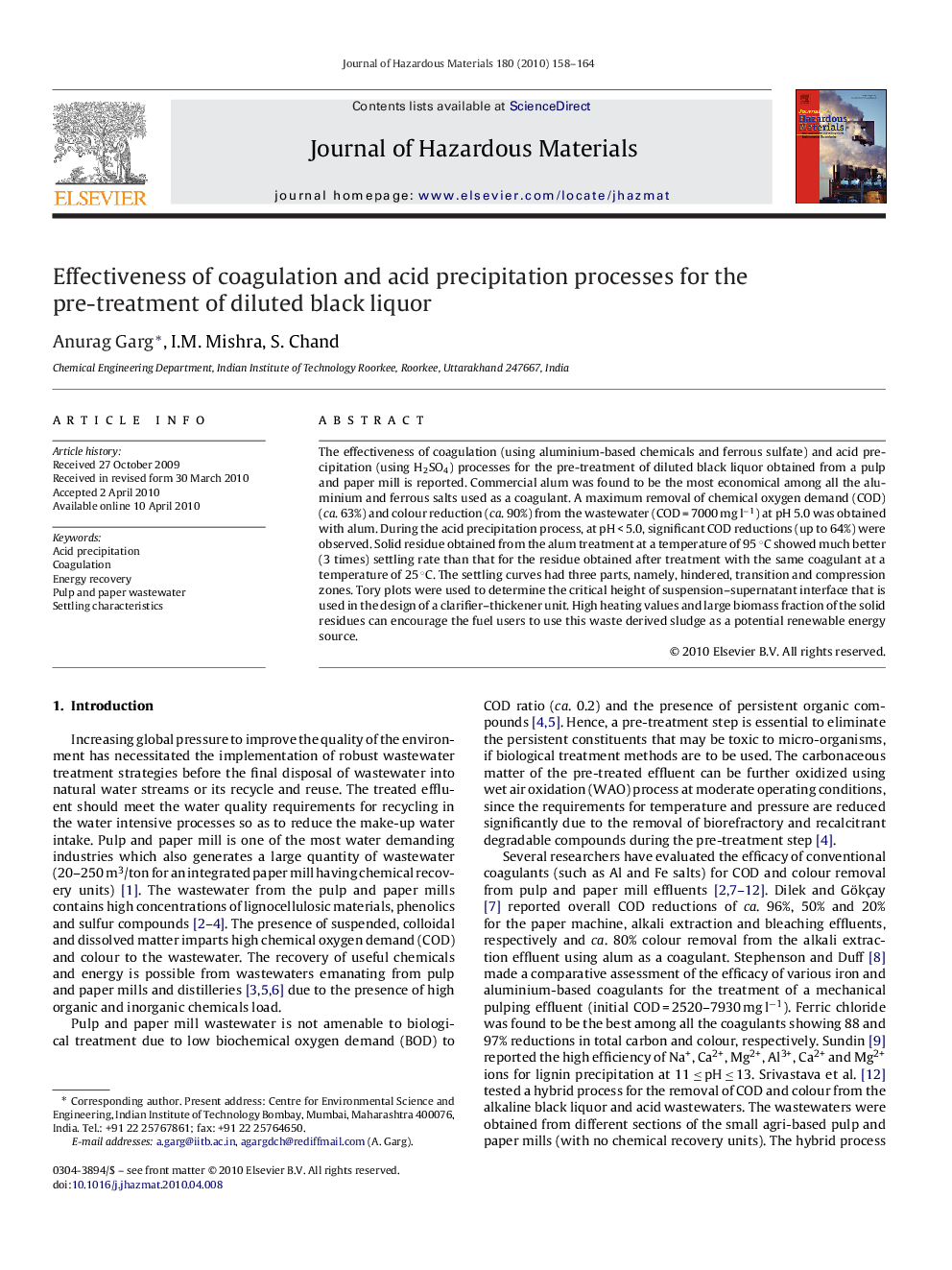| Article ID | Journal | Published Year | Pages | File Type |
|---|---|---|---|---|
| 580044 | Journal of Hazardous Materials | 2010 | 7 Pages |
Abstract
The effectiveness of coagulation (using aluminium-based chemicals and ferrous sulfate) and acid precipitation (using H2SO4) processes for the pre-treatment of diluted black liquor obtained from a pulp and paper mill is reported. Commercial alum was found to be the most economical among all the aluminium and ferrous salts used as a coagulant. A maximum removal of chemical oxygen demand (COD) (ca. 63%) and colour reduction (ca. 90%) from the wastewater (COD = 7000 mg lâ1) at pH 5.0 was obtained with alum. During the acid precipitation process, at pH < 5.0, significant COD reductions (up to 64%) were observed. Solid residue obtained from the alum treatment at a temperature of 95 °C showed much better (3 times) settling rate than that for the residue obtained after treatment with the same coagulant at a temperature of 25 °C. The settling curves had three parts, namely, hindered, transition and compression zones. Tory plots were used to determine the critical height of suspension-supernatant interface that is used in the design of a clarifier-thickener unit. High heating values and large biomass fraction of the solid residues can encourage the fuel users to use this waste derived sludge as a potential renewable energy source.
Keywords
Related Topics
Physical Sciences and Engineering
Chemical Engineering
Chemical Health and Safety
Authors
Anurag Garg, I.M. Mishra, S. Chand,
